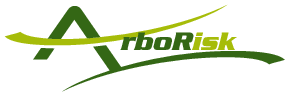Employment Practices Liability Insurance
Employment Practices Liability Insurance
Written by Mick Kelly
One of the first concerns that a new business owner has is how to deal with the hiring, firing and discipline of employees as well as wondering what the consequences your employees’ actions may have for your business.
Not only is the risk of being sued by an employee very real and on the rise, the risk of being sued because of the actions of an employee, outside of the scope of their work, is also very real.
This is where Employee Practices Liability Insurance or EPLI comes in!
What is EPLI
EPLI helps protect businesses against claims and lawsuits arising from improper or unfair acts brought by employees. EPLI includes coverage for the cost of defending a case in court and the damages from a judgement or settlement that may arise from a lawsuit. Legal costs are typically covered in the event of a win or loss.
EPLI covers against claims from:
- full-time and part-time employees
- temporary and seasonal employees
- applicants for employment
- independent contractors
Examples of lawsuits that can be brought against an employer include:
- Unfair discipline
- Wrongful termination
- Unfair demotion or negligent evaluation
- Breach of employment contract
- Failure to employ or promote
- Sexual harassment
- Discrimination – age, race, sex, religion, etc
- Libel, slander, defamation of character
- Invasion of privacy
- And more
Most small business owners think such claims will never come against them since the have the best employees or their employees just “aren’t like that” – but the claim may come from the actions of someone else within your organization or from a mistake from the employer. Even a “heat of the moment” dismissal may result in an ex-employee seeking damages for wrongful termination.
EPLI is typically a claims made policy – meaning you must have it at the time of the incident in order to have coverage.
How much does EPLI cost?
A rough rule of thumb is EPLI costs between $25 – $40 per employee but pricing does vary per carrier
EPLI Premiums, are typically based on the these factors:
- Type Of Business
- Number of Employees
- Coverage Limits
- Deductible
- Past EPLI claims history
Many carriers will offer EPLI as an add on to the business liability policy but in the incidences where they don’t, EPLI policies can be purchased as stand alone policies.
How much coverage should you carry?
This question varies from business to business. Most small business’s don’t have the thousands of dollars that it would cost to defend an EPLI case and a way to offset that is to pay a monthly premium for the EPLI coverage.
It should be noted that most EPLI policies have a deductible and that the cost of the monthly premium plus the deductible along with the likelihood of a claim should all be factored in before deciding to purchase the policy.
A company with a well run HR department may feel more comfortable forgoing the coverage in the knowledge that all the correct steps are being taken in regards to discipline, termination, hiring, etc. however, even a highly skilled HR department doesn’t mean you’re immune from lawsuits.
What EPLI doesn’t cover
EPLI exclusions include:
- Criminality or violations of state/federal laws – EPLI will not cover you against a criminal act or if you are in violation of state or federal laws. It may cover you up until the point you proven guilty but not beyond that.
- Punitive damages
- Worker’s compensation claims
- Contractual liability or breach of contract
EPLI with Third Party coverage
This is an add on to EPLI coverage. While EPLI covers you against employee lawsuits, Third Party coverage covers you against the actions of your employees towards others such as customers or clients. These lawsuits are typically discrimination or sexual harassment in nature.
In a labor market where it’s become very difficult to hire and a lot of business’s are hiring “a body” to get by, this coverage can be helpful. While all businesses want to vet their employees to the highest standard and only hire people of the highest moral quality, it’s not always possible to be certain of either and EPLI coverage with Third Party coverage can be a way of mitigating that risk.
That being said, Third Party EPLI claims for smaller businesses are far more common in the food and accommodation and retail services than they are in contractor fields. The additional 15 – 20% cost associated with it should be weighed up against the likelihood of employee interaction with clients and customers.
For more information on EPLI, contact a member of the ArboRisk Insurance team! ArboRisk also can work one-on-one with you to create an extraordinary business through our Thrive Risk Management New Heights package!




Recent Comments